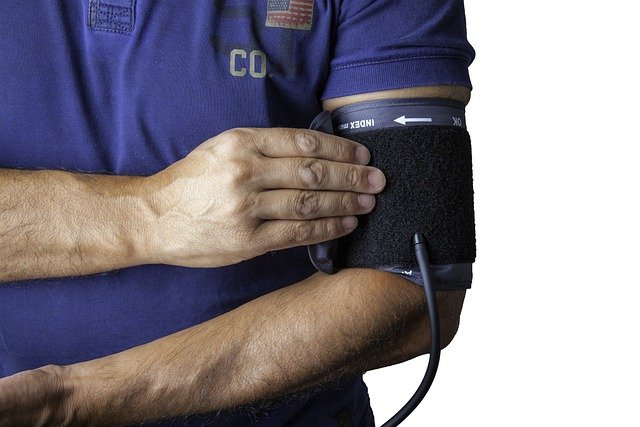Cost and outcome measures for value-based care programs
Value-based care programs shift payment toward outcomes, requiring clearer measurement of costs and clinical results. This article outlines common cost drivers, outcome metrics, and how tools like analytics, telemedicine, and wearables support program goals. It also includes practical pricing guidance and a comparison table for typical services.

Value-based care programs aim to align spending with patient outcomes rather than service volume. Programs track both financial inputs and clinical results to determine whether interventions—such as prevention, chronic care management, or diagnostics—deliver measurable improvements. Assessing value requires combining utilization and cost data with clinical outcome measures, patient-reported outcomes, and process indicators to form a comprehensive view of program performance.
This article is for informational purposes only and should not be considered medical advice. Please consult a qualified healthcare professional for personalized guidance and treatment.
How do analytics and outcomes measure value?
Analytics form the backbone of outcome measurement by linking clinical events to costs and long-term trends. Risk adjustment, population stratification, and predictive models help identify where interventions will yield the greatest benefit. Outcome measures include disease-specific metrics (e.g., A1c control for diabetes), utilization measures (hospital admissions, readmissions), and patient-reported outcomes. Robust analytics platforms allow teams to attribute changes in outcomes to specific program components while accounting for confounders and time trends.
How does prevention and screening affect costs?
Prevention and screening can reduce downstream spending by detecting conditions earlier and managing risk factors before they escalate. Screening and immunization programs target population-level risk reduction and can lower expensive acute events if followed by effective follow-up care. Cost measurement for prevention includes program delivery expenses, screening costs, and the avoided costs of advanced disease. Evaluations commonly compare short-term program costs against modeled longer-term savings to understand return on investment.
What role do telemedicine and monitoring play?
Telemedicine and remote monitoring expand access and can lower per-episode costs by reducing in-person visits and enabling timely interventions. Remote monitoring with wearables and connected devices can detect early deterioration in chronic patients, prompting outpatient management that avoids hospitalization. When measuring cost-effectiveness, programs track platform fees, per-visit costs, and changes in utilization. Privacy and data governance are essential considerations when integrating telemedicine and monitoring into value-based models.
How do adherence, engagement, and chronic management tie in?
Adherence and engagement are critical process measures that link interventions to outcomes in chronic care. Programs monitor medication adherence, follow-up appointment attendance, and participation in wellness or nutrition counseling. Improved adherence often correlates with better outcomes and lower costs in conditions like heart failure or diabetes. Measurement frameworks incorporate both engagement metrics and clinical endpoints to assess whether behavior-change programs are yielding expected improvements.
How do diagnostics, immunization, and nutrition contribute?
Diagnostics and timely screening inform clinical decisions and can prevent unnecessary interventions by targeting therapy. Immunization programs reduce disease incidence and associated cost burdens, particularly for vaccine-preventable conditions. Nutrition counseling and lifestyle interventions are prevention-oriented services that can shift risk profiles over time. Cost and outcome measurement must include both the immediate costs of diagnostics and the downstream effects on treatment patterns and outcomes.
A practical look at real-world costs and pricing helps programs plan budgets and vendor selection. Costs vary by scale, feature set, and contracting model: telemedicine platforms may charge per consult or monthly per-provider fees; remote monitoring vendors often combine device costs with subscription and data-analytic fees. Implementation and ongoing analytics support are material cost drivers. Below is a representative comparison of common services and providers to illustrate typical ranges seen in program budgeting.
| Product/Service | Provider | Cost Estimation |
|---|---|---|
| Telemedicine consults | Teladoc Health | $10–$75 per consult; or $50–$300+ per provider per month (platform pricing varies) |
| Remote patient monitoring (RPM) | Philips / ResMed | $30–$150 per patient per month (device + platform + monitoring) |
| Wearable ECG/arrhythmia diagnostics | AliveCor (Kardia) | $99–$199 one-time device; subscription $5–$15/month for advanced services |
| Laboratory diagnostics (per test) | Quest Diagnostics / LabCorp | $10–$200 per test depending on panel and payer arrangements |
| Vaccination clinic services | CVS MinuteClinic / Walgreens | $20–$60 per vaccine administration (varies by vaccine and payer) |
| Population health analytics | Epic / IBM Watson Health (solutions vary) | $5,000–$50,000+ per month for enterprise deployments depending on scale |
Prices, rates, or cost estimates mentioned in this article are based on the latest available information but may change over time. Independent research is advised before making financial decisions.
Conclusion Measuring cost and outcomes in value-based care requires integrated data, clear clinical and process metrics, and ongoing analytics to attribute changes correctly. Programs that combine prevention, screening, adherence support, telemedicine, and diagnostics can influence both costs and outcomes, but rigorous measurement and attention to privacy and engagement are essential. Budgeting should consider device and platform fees, implementation costs, and the need for sustained monitoring to evaluate long-term value.





